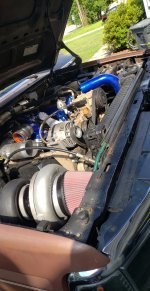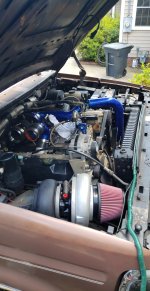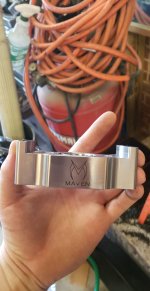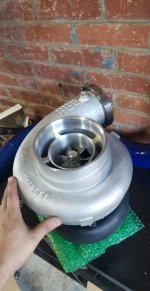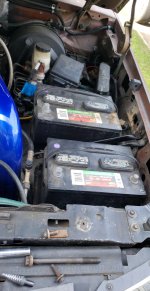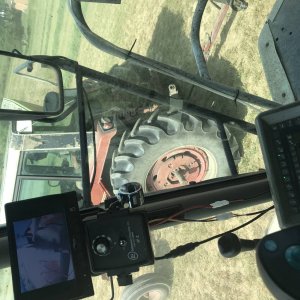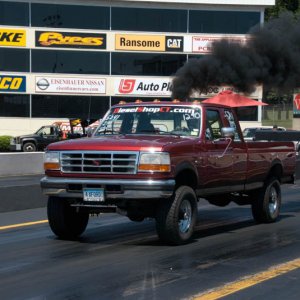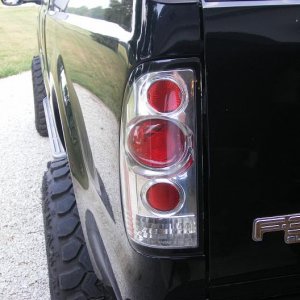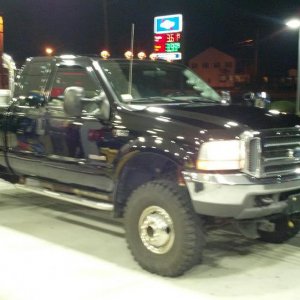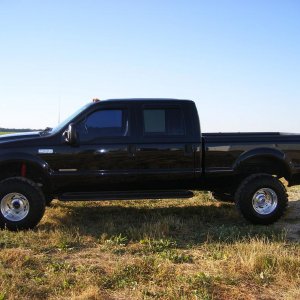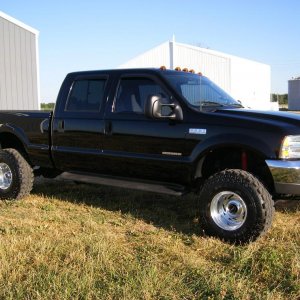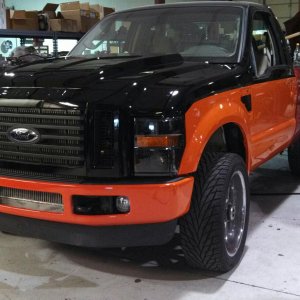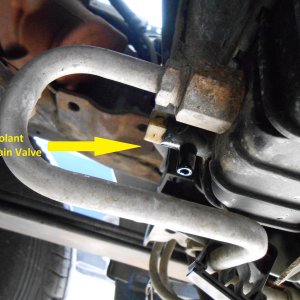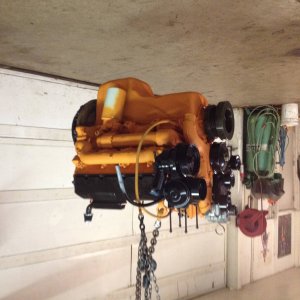Charles
Well-known member
- Joined
- May 18, 2011
- Messages
- 2,729
- Reaction score
- 47
Okay well that answers that question, so here's another lol. I'm pretty clear on how to tune the wastegate for the atmospheric charger, but how do I tune the one for the high pressure turbo?
A good rough starting point is to simply split the boost to each charger. And contrary to intuition, that does not mean dividing the boost in two. For instance, if you wanted say 60lbs on the manifold and wanted to start by dividing the work between chargers, you would do as follows. If you're already up on this, skip it, otherwise read along.
60psi, is really what is called gauge pressure. A gauge is calibrated to read 0 psi at 1 atmosphere of pressure (the pressure on a standard day at sea level). Well, in reality, that one atmosphere is really exerting 14.7psi at sea level. This is called absolute pressure. You may have seen these two units show up as psig and psia respectively.
At sea level, 0psig (psi gauge) is equal to 14.7psia (psi absolute).
So..... back to 60psi...
That is 60psig. In absolute terms, that is 60 + 14.7 = 74.7psia. Gauge pressure, plus the 14.7psi of normal atmospheric pressure the gauge is zeroed at.
So you want 74.7psia on the manifold. Well, you started at 14.7psia coming into your compressor system at the first stage (atmosphere) charger. You then want to compress this a certain number of times so that it will be made more dense and will fit into the FINITE volume your engine displaces. How many times? Well, 74.7 divided by 14.7 to be exact, or 5.08 times. That is called the pressure ratio, abbreviated PR. This is the vertical (Y) axis on a compressor map...
So we need 5.08:1 compression on the incoming air. Since each compressor multiplies incoming pressure, you take the square root of 5.08 for an even split, yielding 2.25. That is the pressure ratio (PR) that each compressor needs to do in order to be doing half the work. But what does this mean to you? You don't have a gauge that will read the absolute pressure delta across each charger.... so you need real numbers. Okay, so lets make some numbers a regular boost gauge can see. You just need a regular boost gauge on the first stage (interstage) and one on the manifold itself. We already know what we're shooting for on the manifold, 60psig, gauge pressure. But what about the one on the first stage?
Well, the PR is 2.25:1. So if you've got 14.7psia to start with, and you multiply it 2.25 times, you get 33.07psia. But that's absolute pressure.... So back the 14.7psia back out, 33.07psia - 14.7psia = 18.38psig.
So your first stage needs to make ~18lbs in order to be perfectly balanced, in terms of work at 60lbs on the manifold. Lower than people would ever think. This is also why the first stage needs to be much bigger than most people think.
If for instance, you instead split the gauge pressure reading in half, and ran 30lbs on the first stage, the first stage would be doing a PR of 3.04. 30 + 14.7 divided by 14.7. With 60 on the manifold the total is still 5.08, so you have to multiply the 3.04 from the first stage by something in the second to equal 5.08 at the manifold. So, 3.04 x Second stage = 5.08. Solve for the variable and you get 5.08/3.04 = second stage, or 1.67 PR for the second stage.
So how much work is the second stage doing? In the first case both chargers were doing about 18lbs. In this case the first stage would be doing 30, while the second stage would be doing 1.67, or 1.67 x 14.7 which is 24.5psia, subtract out the 14.7 for the atmosphere, and you're looking at 9.8psig. So the second stage would be making 10lbs.....
Not exactly balanced....
Now balanced isn't exactly ideal, but it's a great starting point. After that ideally you would measure intake air temps after each charger and while running at your target manifold pressure you would shift the first stage up while bringing the second stage down and vice-versa until the lowest intake air temps were achieved for a given manifold pressure. Bingo.... that's your MOST efficient point to run a pair of compressors for a given manifold pressure. Leave all the maps and theory at home....

